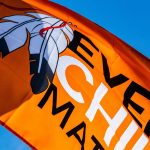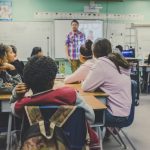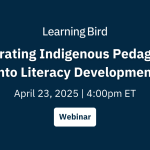Exploring Language Resources: Tools, Trends, and Community Priorities
Across Turtle Island, many Indigenous communities are leading incredible work to reclaim and strengthen their languages. As more programs, schools, and families take up this work, the need for effective language resources continues to grow.
We often hear the same questions: What kinds of tools are other communities using? What’s working? What’s still needed? As we prepared for this year’s WAVES conference—a Global Indigenous Languages Summit—these questions inspired us to dig deeper and launch a short survey to learn directly from those doing the work.
Before we share that survey, here’s a quick look at what we mean by language resources and why they matter.
What Are Language Resources?
Language resources are the tools and materials people use to teach and learn their language. They can be used in various learning environments, including classrooms, at home, online, and out on the land. These resources look different for different audiences. Some are designed for young children in Head Start programs and primary grades, while others are designed for adults with different levels of fluency, from beginners to semi-fluent speakers. Some tools are high-tech, while others rely on print-and-go simplicity. All of them are shaped by community priorities, Protocols, and dialects.
Here are some common examples:
Print-based resources:
- Flashcards
- Storybooks
- Activity sheets and games
- Posters and wall charts
- Curricula and lesson plans
- Educator guides
Digital resources:
- Audio recordings (e.g., pronunciation guides, storytelling)
- Videos and tutorials
- Interactive games or mobile apps
- Digital storybooks
- Slide decks and online presentations
Some resources may also be hybrid, such as interactive PDFs, printables with embedded QR codes, videos with accompanying handouts, or slide-based lessons with audio or video narration.
Behind each of these resources is a thoughtful and often complex process. It might involve working with fluent speakers to record and verify words, adapting materials to reflect local dialects, creating culturally-specific content, or translating key vocabulary in ways that make sense for learners. Many communities are also navigating how to design resources that can grow over time, developing new material as speakers and learners deepen their work together.
Language resources are part of a larger story of community-led language work, and each one is shaped by the unique strengths, teachings, and needs of the people who create them.
A Common Question: What Are Other Communities Doing?
Over the years, we’ve worked alongside many educators, curriculum developers, and community language teams. We often hear the question, “What kinds of language resources are other communities creating?”
It’s a simple question, but it’s not always easy to answer. Communities are doing so much incredible work, but it’s often happening in silos—without a consistent way to share ideas, compare approaches, or see where there might be opportunities to learn from each other. While every community’s context is different, we’ve noticed that many are asking for similar types of tools: materials that are easy to adapt, grounded in local dialects, and usable across generations and levels of fluency.
To better understand those common threads and help share that knowledge, we’ve created a Language Resources Survey. This questionnaire is designed to learn more about the kinds of resources communities already have, what they’re currently developing, and what’s still needed.
Language Resources Survey: We Want to Hear From You
The Language Resources Survey is open to anyone working in Indigenous language revitalization, whether you’re in a school, a cultural department, a grassroots group, or working independently. We want to hear from language educators, curriculum developers, resource creators, coordinators, and fluent speakers who are supporting language initiatives.
The survey includes questions about:
- The kinds of resources your community already uses
- The resources most needed right now
- Priority topics and age groups
- Barriers to accessing or developing new materials
- The types of tools or support that could help you do this work more effectively
We hope to use this information to:
- Better understand resource needs across communities
- Identify common development priorities
- Support the creation of flexible, culturally-grounded tools that reflect the needs of Indigenous language learners and educators
- Share results with all participants
- Share highlights of the results more widely via our social media or blog
Your responses will be kept confidential, and no individual or community will be identified in the final summary unless given explicit permission. You can also request a copy of the results or indicate if you’d like us to follow up for a conversation. As a thank you, survey participants who leave their contact information will be entered into a draw to win a $100 Amazon gift card!
Take the Survey
We invite you to share your insights and help strengthen the network of Indigenous language resource development. The survey will take approximately 10-15 minutes to complete.







